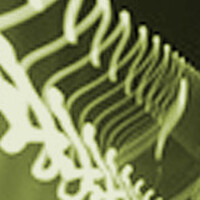Journal entry
Blog post
By Terry Tsang
1)這次的探索是否因AI的介入⽽能夠尋找到另⼀種編排形式︖與傳統的先有作曲再根據⾳樂進⾏排列不同,這次是先有動作,經過AI整合後才⽣成⾳樂。舞者還需要跳群舞,那麼他們是如何保持整齊的︖直覺告訴我,是通過呼吸。我未經深思便採⽤了這種⽅法,或許還有更多可能性︖
1) Can this exploration find a different form of arrangement due to the involvement of AI? Unlike the traditional method of composing first and then arranging based on the music, this time the movement comes first, and the music is generated after being integrated by AI. The dancers still need to perform in unison; how do they maintain their alignment? My intuition tells me it is through breathing. I adopted this method without much thought, but perhaps there are more possibilities?
2)每⽇都有不同的⾃我發現,我發現⾃⼰變得更加仁慈、更有耐性,變得與以往不同。我感恩這幾年不同的編舞經歷,每次的不⾜都促成了下次的進步。如何透過眼睛觀察,⽤什麼⽅法排練,⽤什麼量度⼈與事︖如何評價︖編舞不僅僅是創作,更是控制整個創作流動的過程。
2) Every day brings different self-discoveries. I find myself becoming kinder, more patient, and different from before. I am grateful for the various choreographic experiences over the years; each shortcoming has contributed to the progress of the next. How do we observe through our eyes, what methods do we use for rehearsals, and how do we measure people and events? How do we evaluate? Choreography is not just about creation; it is also about controlling the entire flow of the creative process.
3)我們⼀起去飲茶,因為前天是我的⽣⽇,他們為我準備了蛋糕,我們⼀起唱⽣⽇歌、切蛋糕。這種不預期的活動,讓我們更加感受到歸屬感。藝術不正是如此嗎︖始終離不開⼈。
3) We went out for dim sum together because the day before yesterday was my birthday. They prepared a cake for me, and we sang happy birthday and cut the cake together. This unexpected activity made us feel a stronger sense of belonging. Isn’t that what art is all about? It is always connected to people.
Posted by

Andrew Lang

